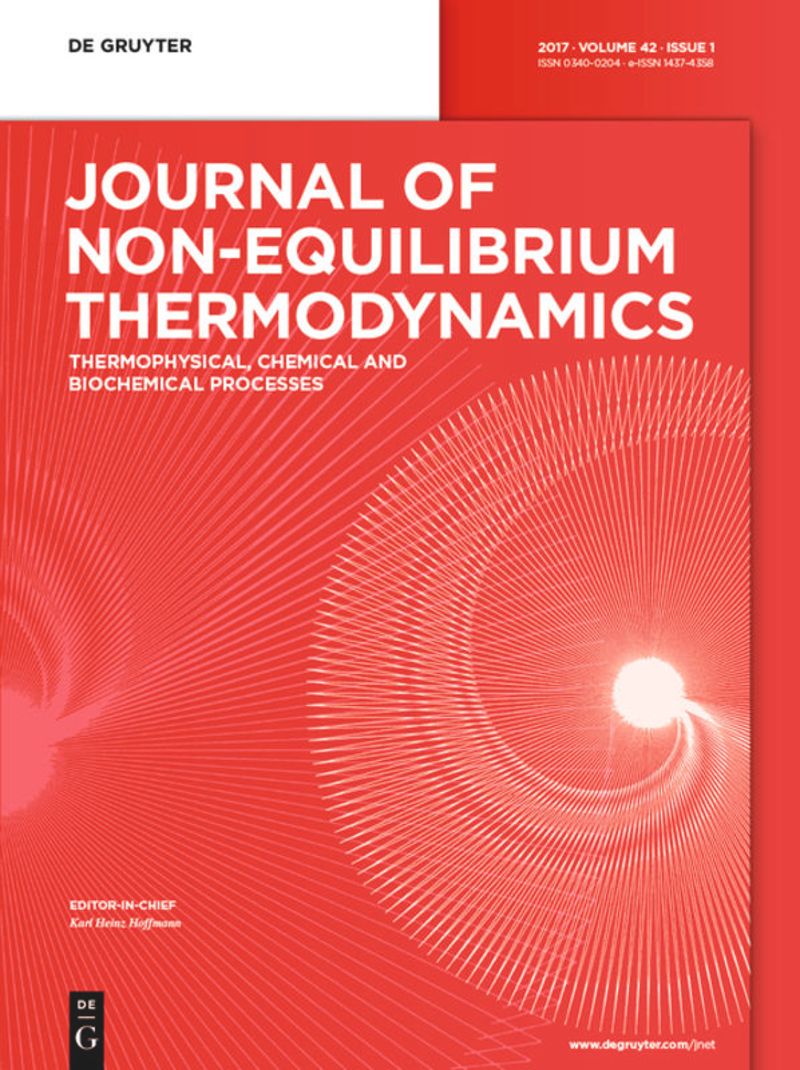有限势源内可逆非等温化学发动机的最大功构型
IF 4.3
3区 工程技术
Q1 MECHANICS
引用次数: 15
摘要
摘要化学发动机是一些设备的抽象模型,如固态、光化学和电化学设备、光伏电池和质量交换器。有限化学势源是其特点之一。有限时间热力学为确定给定热力系统的性能极限和确定给定性能目标的热力系统的最佳工艺路径提供了有效的理论工具。内可逆模型是其基本模型。建立了具有质阻和热阻的内可逆非等温化学发动机在有限化学势源和无限化学势阱之间运行的模型。模型中化学势储层和工作流体之间的传质过程服从线性不可逆热力学中的Onsager方程。在固定周期的情况下,应用最优控制理论推导出了模型最大输出功的最优循环配置。所获得的结果包括了以往许多文献中的最优性能和最优路径结果,可以为实际化工装置的优化设计提供一些理论指导。本文章由计算机程序翻译,如有差异,请以英文原文为准。
Maximum work configuration of finite potential source endoreversible non-isothermal chemical engines
Abstract Chemical engine is an abstract model of some devices, such as solid state, photochemical, and electrochemical devices, photovoltaic cell, and mass exchangers. Finite chemical-potential source is one of its features. Finite time thermodynamics provides effective theoretical tool for determining performance limits for given thermal systems, and determining optimal process paths of thermal systems for given performance objectives. Endoreversible model is its basic model. A model of endoreversible non-isothermal chemical engines operating between a finite chemical-potential source and an infinite chemical-potential sink with mass resistance and heat resistance is established. Mass transfer processes between chemical potential reservoir and working fluid of the model are assumed to obey Onsager equations in linear irreversible thermodynamics. With a fixed cycle period, optimal cycle configuration for the maximum work output of the model is derived by applying optimal control theory. The results obtained include optimal performance and optimal path results in many previous literatures, and can provide some theoretical guidelines for optimal designs of practical chemical plants.
求助全文
通过发布文献求助,成功后即可免费获取论文全文。
去求助
来源期刊
CiteScore
9.10
自引率
18.20%
发文量
31
审稿时长
1 months
期刊介绍:
The Journal of Non-Equilibrium Thermodynamics serves as an international publication organ for new ideas, insights and results on non-equilibrium phenomena in science, engineering and related natural systems. The central aim of the journal is to provide a bridge between science and engineering and to promote scientific exchange on a) newly observed non-equilibrium phenomena, b) analytic or numeric modeling for their interpretation, c) vanguard methods to describe non-equilibrium phenomena.
Contributions should – among others – present novel approaches to analyzing, modeling and optimizing processes of engineering relevance such as transport processes of mass, momentum and energy, separation of fluid phases, reproduction of living cells, or energy conversion. The journal is particularly interested in contributions which add to the basic understanding of non-equilibrium phenomena in science and engineering, with systems of interest ranging from the macro- to the nano-level.
The Journal of Non-Equilibrium Thermodynamics has recently expanded its scope to place new emphasis on theoretical and experimental investigations of non-equilibrium phenomena in thermophysical, chemical, biochemical and abstract model systems of engineering relevance. We are therefore pleased to invite submissions which present newly observed non-equilibrium phenomena, analytic or fuzzy models for their interpretation, or new methods for their description.

 求助内容:
求助内容: 应助结果提醒方式:
应助结果提醒方式:


